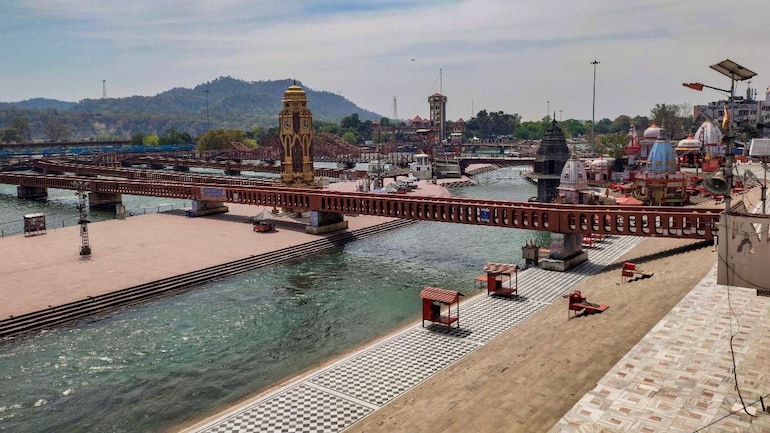Blog
Water Quality Assessment

Using overall index of pollution in riverbed-mining area of Ganga-River Haridwar, India
Rivers are one of the major sources of freshwater for human beings for providing water for irrigation, industrial, and daily needs (Meybeck, 1976; Ridoutt & Pfister, 2010; Sunil, Somashekar, & Nagaraja, 2010). The transfer of sediments, pollutants, debris, and other substances from one place to another place is also carried out by the current of a river systems (Lal, 1977; Padmalal & Maya, 2014). Rivers are also responsible for maintaining or recharging the groundwater aquifers (Ghalib & Sogut, 2014).
However, water chemistry of the riverine ecosystem depends upon various lithological characteristics, evaporation process, habitat ecological parameters, and weathering of rocks from place to place (Ghalib, 2017). Nowadays, rivers are under enormous load due to anthropogenic activities like sewage waste discharged, industrial activity, riverbed mining activity, water quality of the river has deteriorated appreciably which has affected the aquatic life as well as human life (Aswal, Singh, Kamboj, & Singh, 2016; Jindal & Sharma, 2010; Kamboj, Kamboj & Sharma, 2017; Sreebha & Padmalal, 2011). Amongst the above, riverbed mining has become a major threat to the aquatic habitats and health of the related flora and fauna (Soucek, Cherry & Zipper, 2003). Riverbed mining is the extraction process of sediments from the bottom of instream and floodplain area of the river (Kamboj et al., 2017; Sreebha & Padmalal, 2011). The aquatic diversity is negatively affected by the riverbed mining practice as it removes the significant nutrients from the rivers. This hampers the thriving organisms leading to the disturbance of the river ecosystems (Bruns, 2005). The quality of river water changes severely when the riverbed mining practice is conducted on the instream which promotes temporary turbidity and create the disturbance in other related parameters (Peck Yen & Rohasliney, 2013).
Ganga River, one of the most significant perennial rivers of the country, enjoys the spiritual status in Hindu religion and is a great symbol of Indian culture. It originates from the Himalayas in the Indian state of Uttarakhand and flows through the north Indian Gangetic plain, covering a catchment area of 2525 km and finally falling into the Bay of Bengal (Kamboj, Bharti, Kamboj, Rani & Sharma, 2016; Kumar, Kumar, Srivastava, Singh & Kumar, 2018). It is the largest river in the world by discharge (Bhattacharji & Bandyopadhyay, 1995).
The Ganga River carries a huge quantity of sediments consisting of stone, gravel, and sand during themonsoon. The deposition of these materials in the river form the sediments dunes. These sediments dunes are continuously changing the morphological characteristics of the river which causes bank erosion and leads to a flood condition (Kamboj, Pandey, Shoaib & Kumar, 2012). So, to protect the river bank, forest land, and nearby agriculture landform from flooding, the collection of sands, boulders, and gravels from the riverbed have been undertaken. But due to the unscientific and haphazard mining activity, it influences the water quality and aquatic biodiversity. The quality of surface water plays a significant role in the development of aquatic flora and Fauna. Many Hydrogeochemical models (Ghalib, Yaqub & Al-Abadi, 2019) and water quality index method were used to assess the status of water quality. Water quality index is a single numerical value used for determining the quality of water for human consumption (Asadi, Vuppala & Anji, 2007; Hoseinzadeh, Khorsandi, Wei & Alipour, 2014). For evaluating the quality status of any river body, a plethora of water quality indices are available. Most common water quality index used are weighted arithmetic index method (Brown, McClelland, Deininder & Tozer, 1970), National Sanitation Foundation Water Quality Index (NSFWQI) (Hoseinzadeh et al., 2014), Overall Index of Pollution (OIP) (Sargaonkar & Deshpande, 2003), etc. The OIP helps in understanding the water quality condition of the surface water sources especially under Indian conditions (Sargaonkar & Deshpande, 2003). The present study is the first of its kind in revealing the surface water quality of Ganga River in the riverbed mining area based on theOIP to restoring, flood management, and recreational activities of the Riverine system. In the present study, an attempt has been made to investigate whether riverbed mining activities influence the quality of riverwater or not.
See All the Article here

